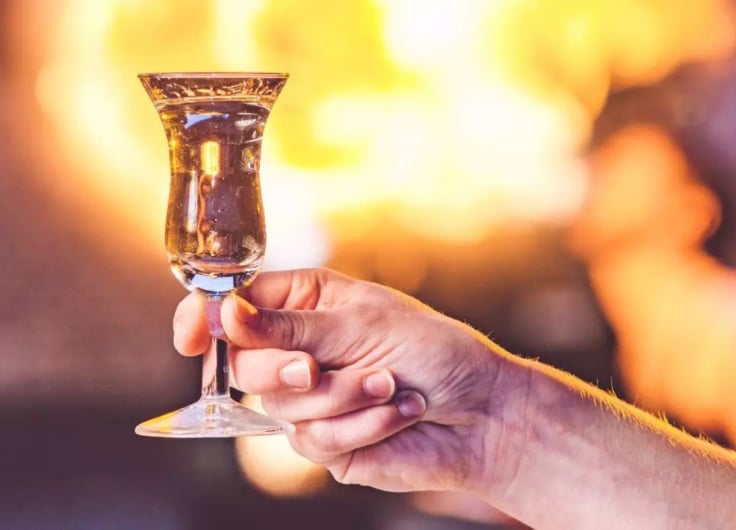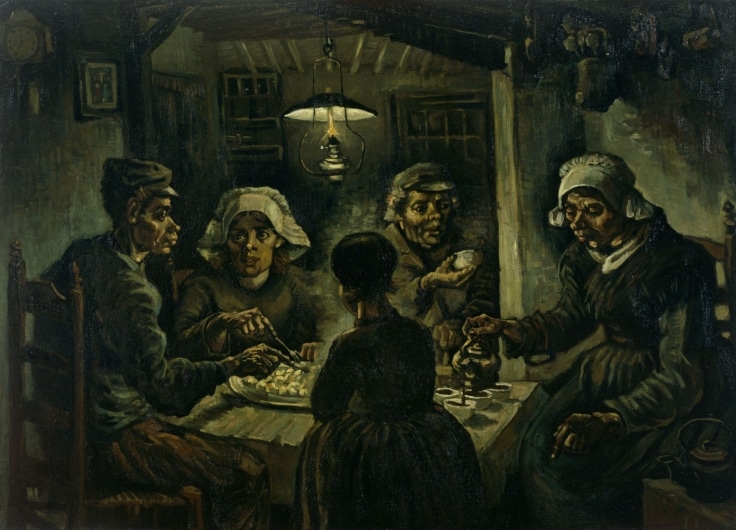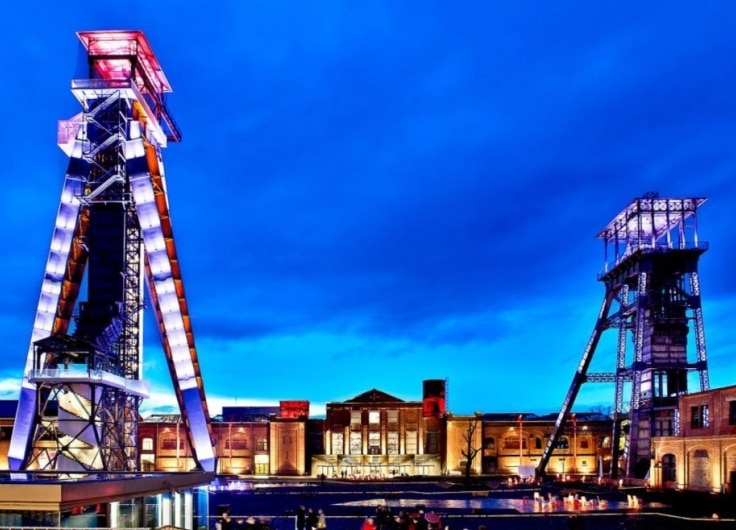If you want to see and experience how things used to be in the Flemish countryside, you will find plenty to do at Bokrijk Open-Air Museum. But the museum, located in a large park in the Belgian province of Limburg, is not stuck in the past. The clogs and rustic farmhouses are meant to make us think about how we want to live today and in the future.
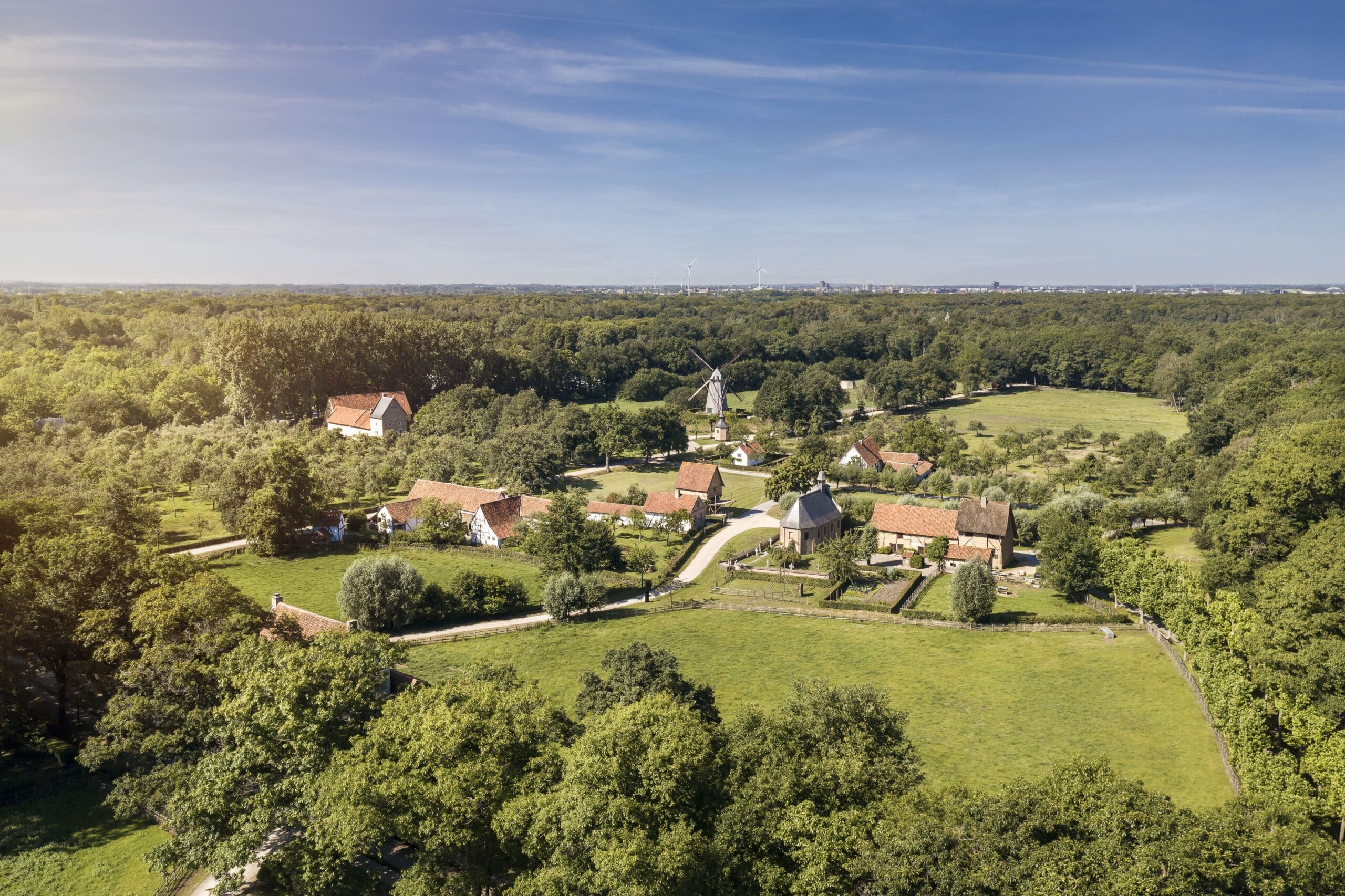 The open-air museum is located in a domain of 550 hectares of nature.
The open-air museum is located in a domain of 550 hectares of nature.© BKRK
The open-air museum is located in a domain of 550 hectares of nature. In the arboretum, surprising paths wander past bamboo and banana groves, Japanese ponds and arbours, fern and rhododendron collections. The taste for exoticism trumps the interest in the traditional native ornamental plants. And, ironically, due to climate change, certain alien species are thriving here.
Bokrijk has a lot to offer. Visitors can walk endlessly on well-marked routes and children can play in the free playground offering miniature golf, a mega slide, toys geared to children with disabilities and a real ‘kindergarten’. It’s also possible to cycle – even directly ‘through’ the water – on a two-hundred-meter-long strip of land that cuts right through a pond. From a distance, it is quite funny to see cyclists’ heads sticking out of the water.
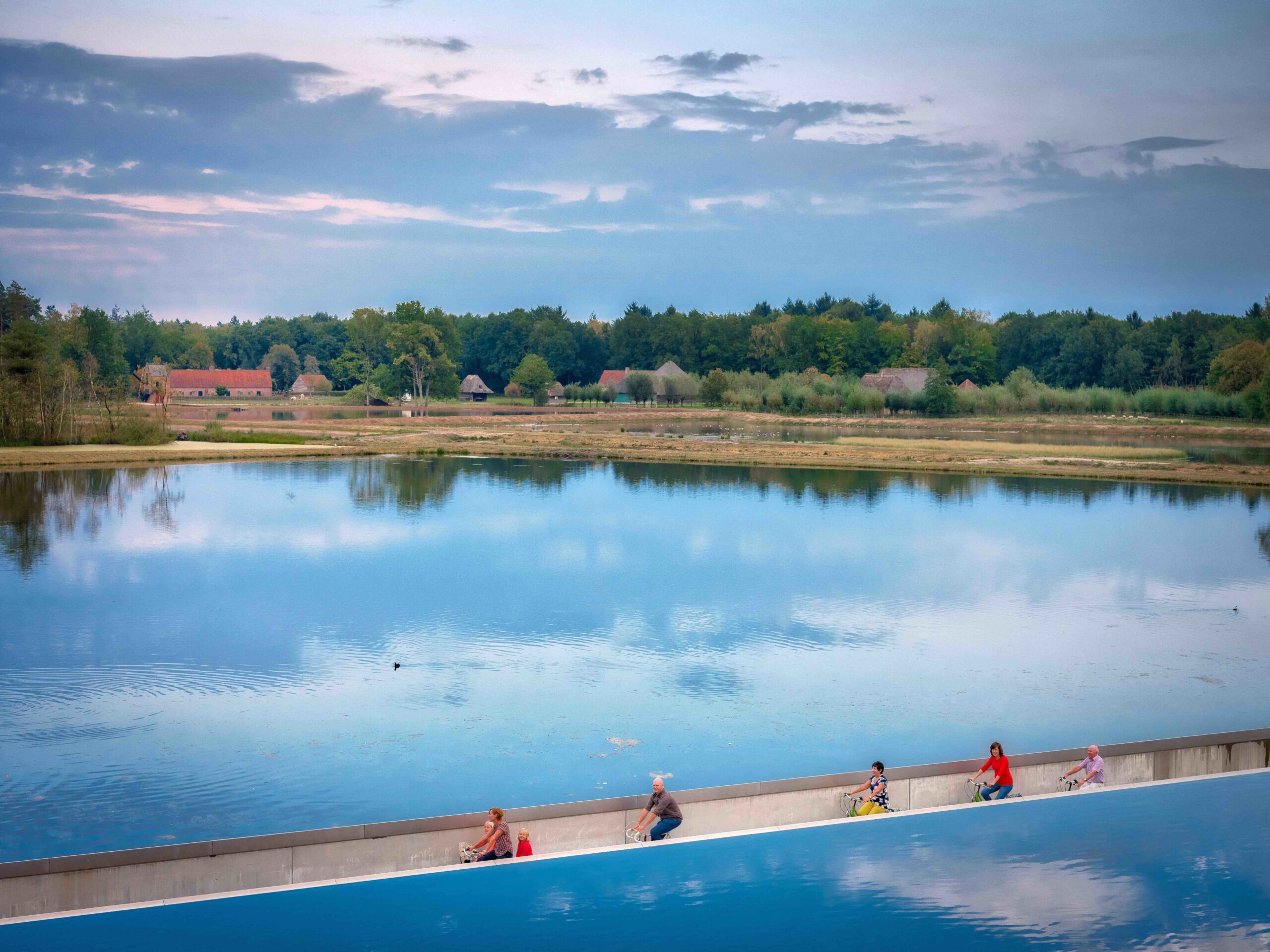 Cycling 'through' the water.
Cycling 'through' the water.© BKRK
But the main attraction remains the open-air museum with its farms and village from bygone times. The first reconstructions of existing farms, such as the Langgevelhoeve in Houthalen or the shabby cellar hut in a Kempen heath landscape, were built in Bokrijk around 1953 when it was still the private initiative of one man, the painter Charles Wellens.
Wellens’ dream was to collect picturesque farm buildings from the area and place them in an environment where artists could find inspiration and walkers could enjoy the atmosphere of the Kempen of yesteryear. In both his paintings and in the open-air museum, Wellens’ idea was to capture the romantic landscape that was already disappearing in the first half of the 20th century due to advancing industrialization. He initially wanted to set up an artists’ studio in the Wellenshoeve, a farm named after him, but with some additional rustic elements, such as a dog wheel and dormer windows.
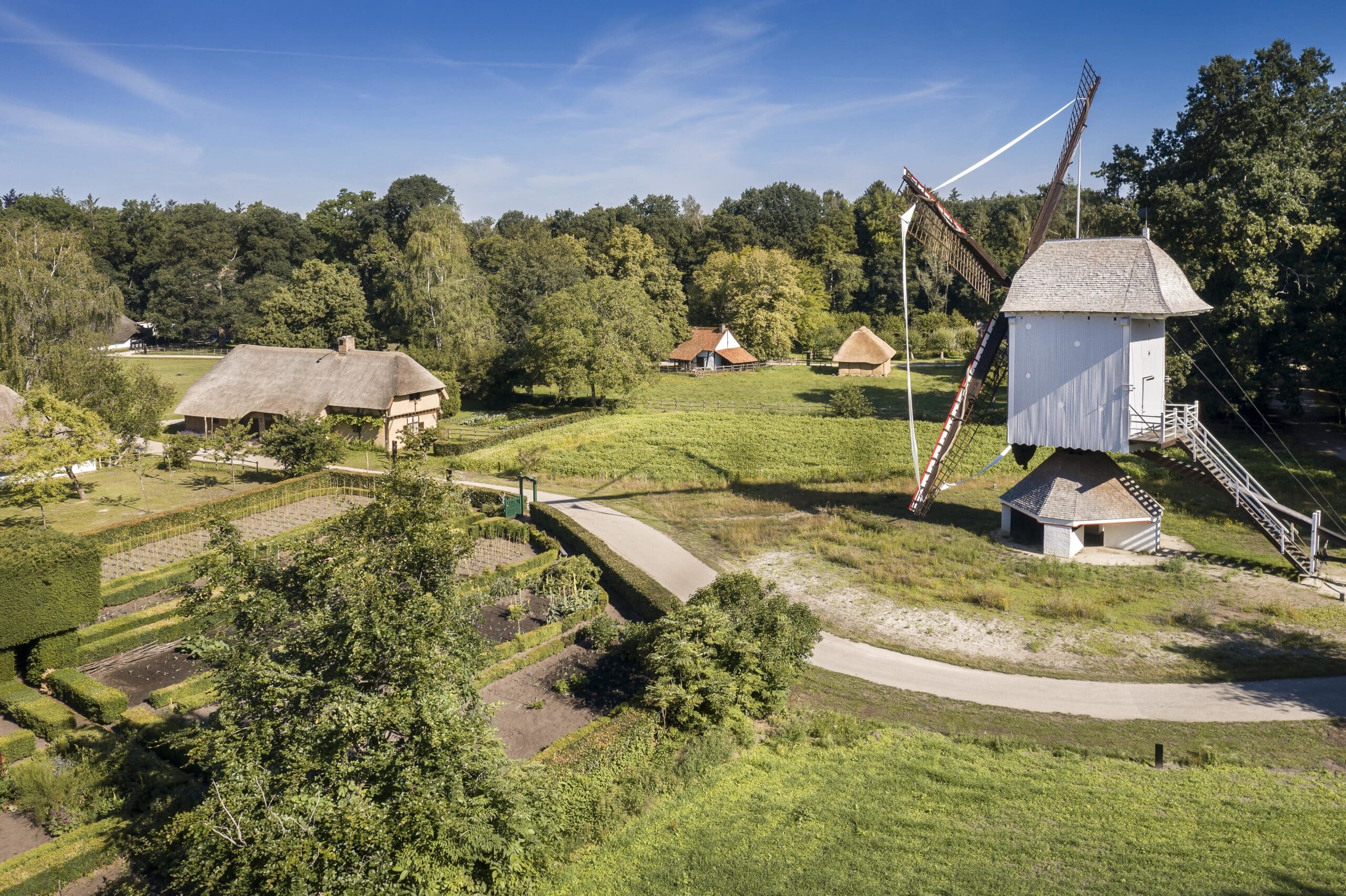 The main attraction of Bokrijk remains the open-air museum with its farms and village from bygone times.
The main attraction of Bokrijk remains the open-air museum with its farms and village from bygone times.© BKRK
He chose the farm site, under an old oak tree, because of the picturesque setting. When it became clear that the original farm could only fit into the site when it was placed in a mirror position, it was simply rebuilt the other way round. Farms and industrial buildings on the verge of disappearing forever were given a new place in posterity through the work of Wellens’ successor, curator Jozef Weyns.
The past is clearly (re)constructed here, and most visitors discover a time they themselves have never experienced. Yet, the recognisable traces and landscape elements ensure that the site doesn’t feel like a completely fictional amusement park experience. Reenactors bring ‘living history’ scenes and storytelling to life, focusing on, amongst other things, the Spanish Flu of 1919. The resemblance of that pandemic to our more recent one is striking and shows how history does, indeed, repeat itself and human nature remains the same throughout the centuries. It is only the circumstances that change.
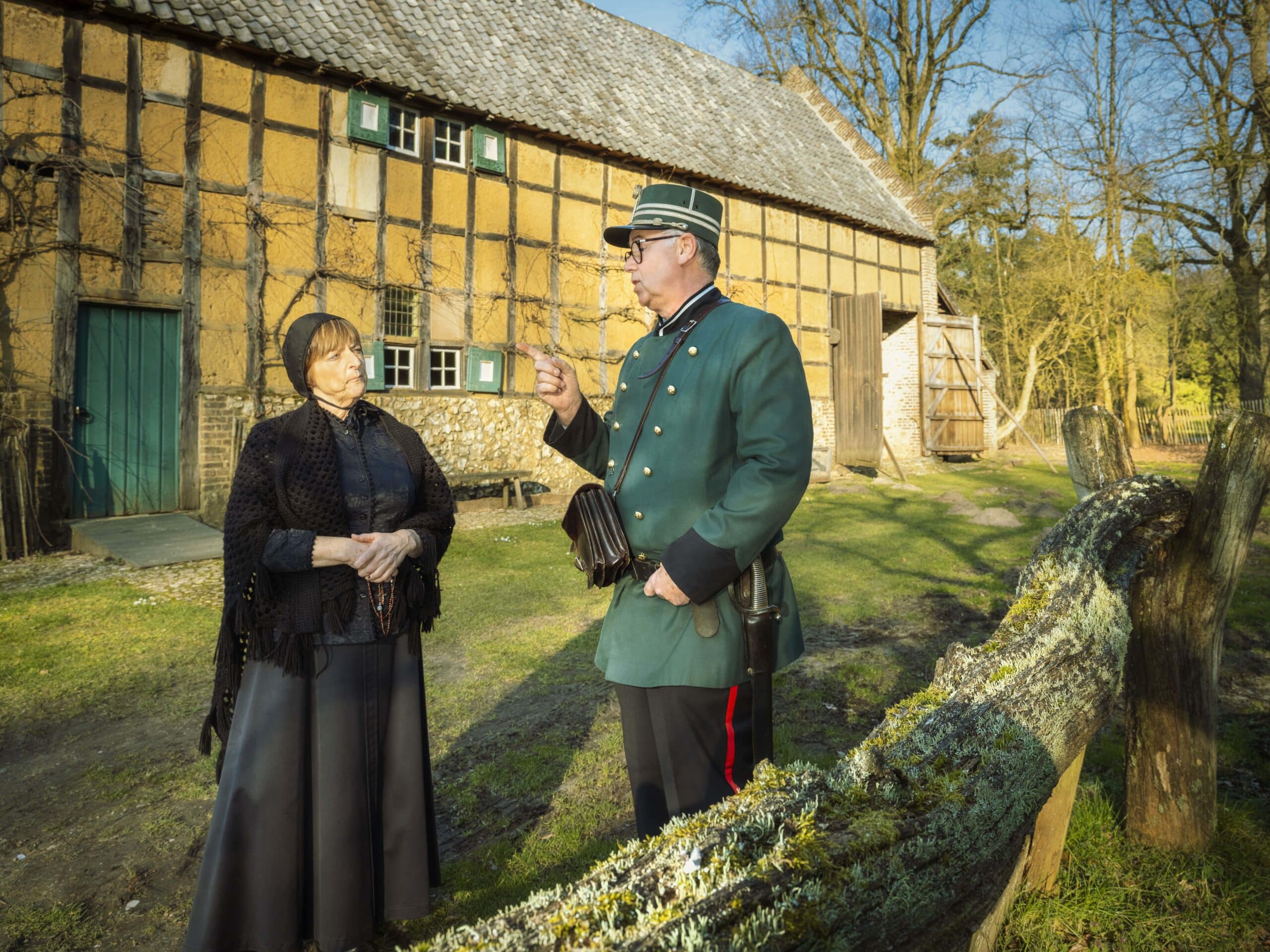 Reenactors bring 'living history' scenes and storytelling to life.
Reenactors bring 'living history' scenes and storytelling to life.© BKRK
The atmosphere in Bokrijk is especially pleasant because of the greenery, the simplicity and the vastness; the space and time that can still be enjoyed here. Even on busy days, the site retains a certain measure of peace, although the inn and terraces fill up quickly. At a church with stray goats in the forecourt, a school group re-enacts the roles of elated children who lived a very different experience. They play games in the play barn and test their agility with block running or shuffleboard, bouncing balls and spinning tops. For a moment, the scene resembles a Bruegel painting come to life. Then, when the bell rings, another class group emerges from the wooden benches of the old school building; living anachronisms in their yellow fluorescent vests. A little further on, at the mill, a guide depicts an era that she did not experience herself. However, several elderly visitors did and are happy to enthusiastically share that recognition and their memories.
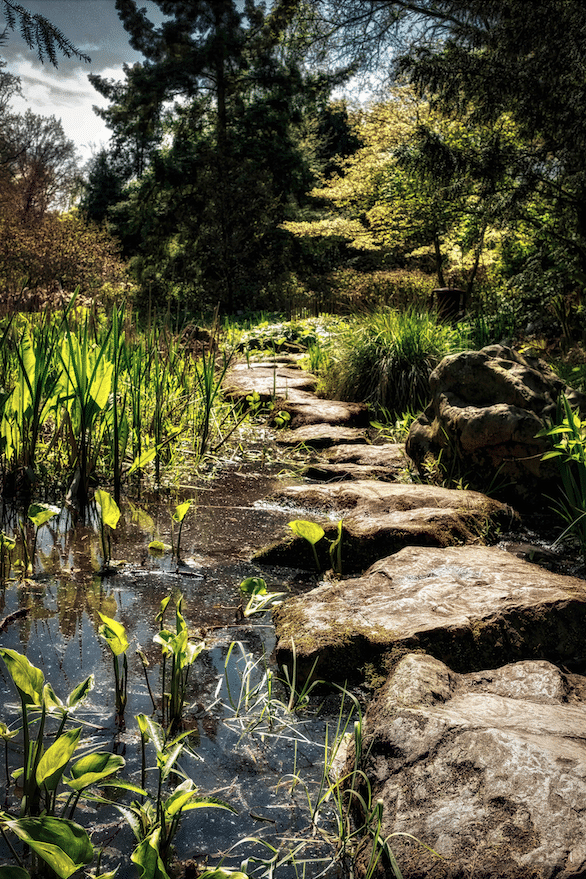 The Arboretum
The Arboretum© BKRK
The paths lead past vegetable gardens full of forgotten vegetables, orchards, a hop field and a herb garden. In addition to historic buildings and objects, the museum also houses various ‘old’ breeds of farm animals in its collection. Intangible cultural heritage – rituals, stories and techniques – also plays an important role. Visitors can watch basket-weaving or pottery demonstrations, and there are workshops in leather processing, bread baking and textile printing. Another barn houses a blacksmith’s shop brought back to life with projections and audio. Everything revolves around skills, tradition and love for the craft.
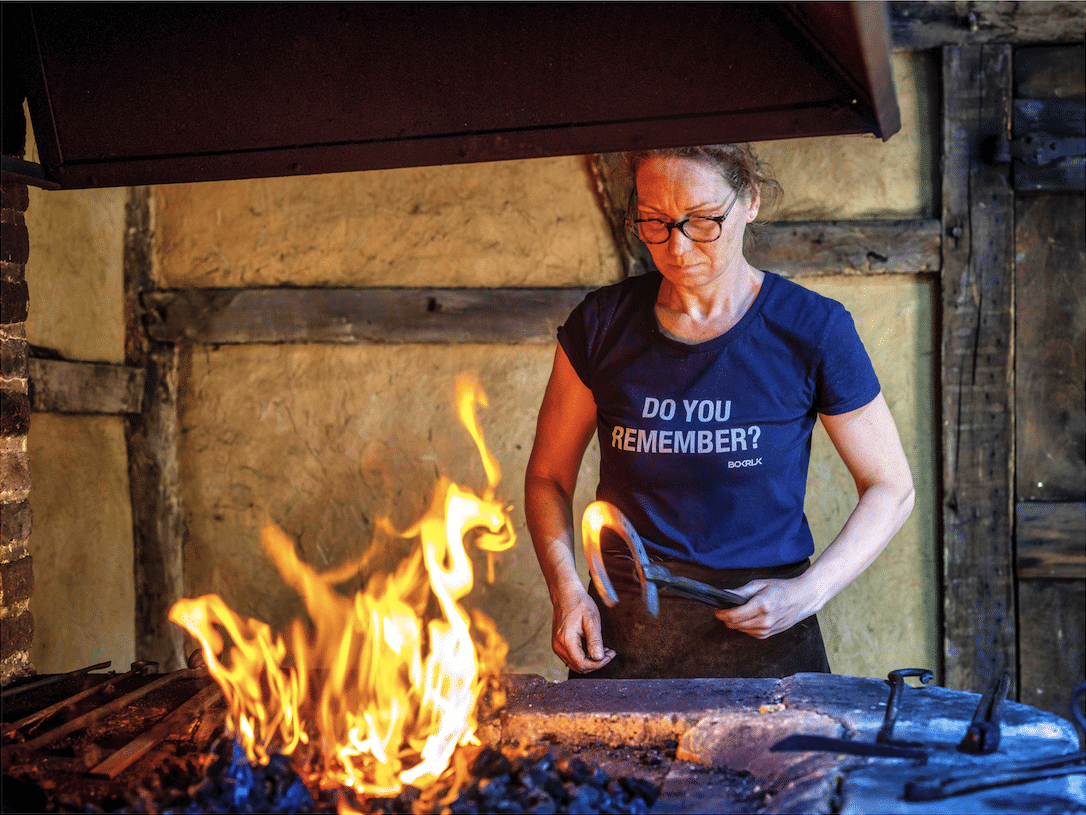 Blacksmith at work. Everything at Bokrijk revolves around skills, tradition and love for the craft.
Blacksmith at work. Everything at Bokrijk revolves around skills, tradition and love for the craft.© BKRK
The atmosphere of nostalgia that reigns here is not completely immersive, but it does seem to point to the current interest in craftsmanship and the satisfaction inherent in manual work. It makes us think about the sustainability of solid materials, vintage, consumption and the illusion of progress. Nowadays, we are engaged in a relentless technological revolution, but at what cost? What quality of life have we lost along the way?
The latter questions are not asked outright but remain clearly tangible in the ‘Golden Sixties’ zone. This is one case where a specific historical period is highlighted, whereas the other themed zones are organised geographically to represent different regions of Flanders. The division may seem arbitrary, but there are reasons relating to funding, historical evolution and policy demands behind this choice. Strangely enough, for example, the Sixties’ exhibits are housed in a section of the museum composed of reconstructed authentic buildings and facades from Antwerp’s city centre in the 15th and 16th centuries.
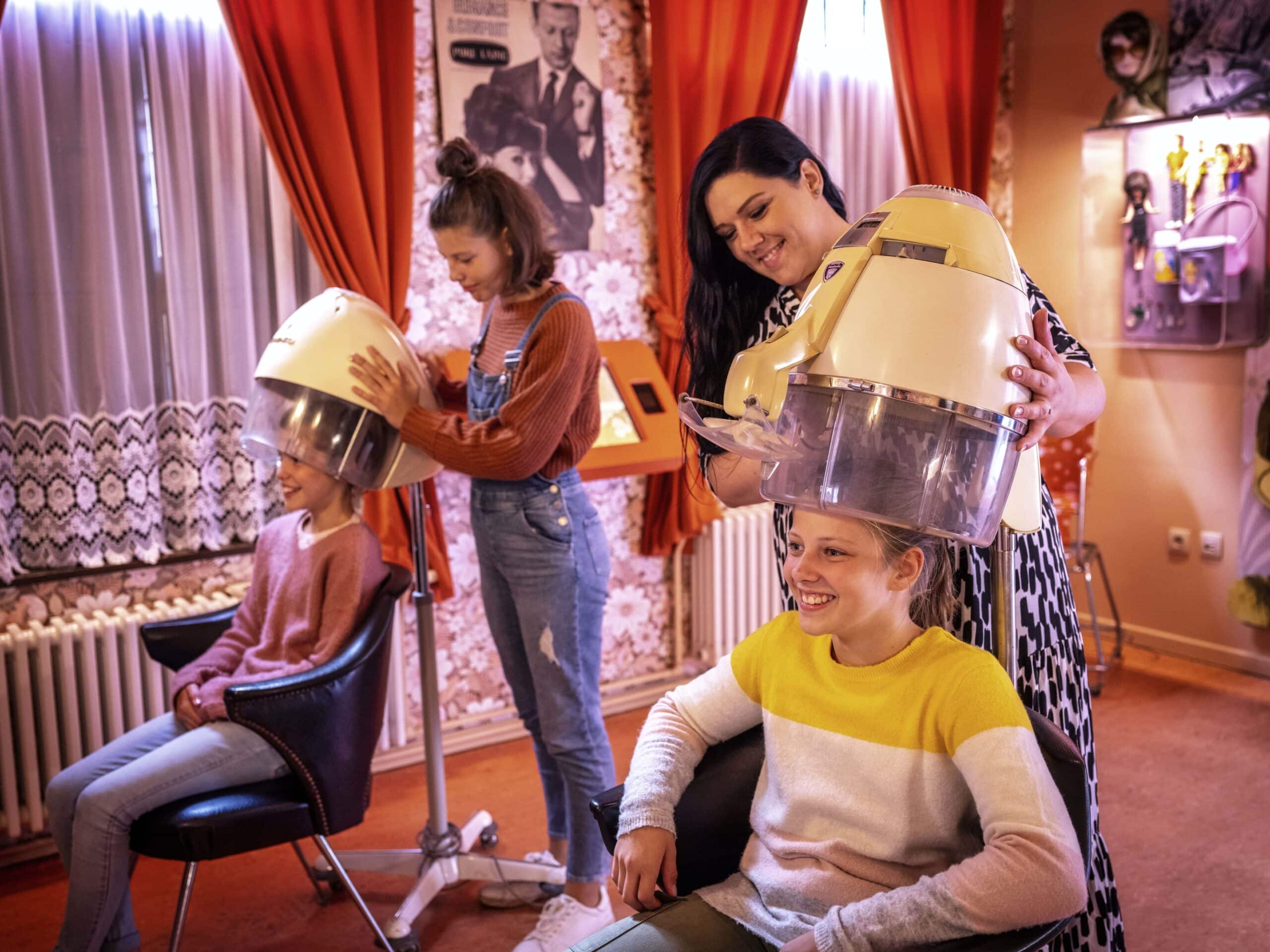 The Sixties exhibition aims to illustrate the unbridled optimism of the era and its yen for progress.
The Sixties exhibition aims to illustrate the unbridled optimism of the era and its yen for progress.© BKRK
The original plan was to provide an overview of urban architecture between the 15th and 20th centuries, so the interactions between city and countryside are necessarily highlighted here. But due to a lack of money, only one-third of that ambitious plan was carried out. The houses have been given different interpretations over the years, but the hoped-for success did not materialise and, in 1995, ‘the Old City’ closed its doors. The Sixties exhibition, which aims to illustrate the unbridled optimism of the era and its yen for progress, has breathed new life into this ‘urban’ section of Bokrijk. But it also stands as a symbolic trace of the ‘destruction’ culture of the 1960s. It depicts our urge to build and the culture of demolition. Part of the patrimony that was demolished in Antwerp found a place in Bokrijk. The result is a typical Flemish image of a historic city centre: medieval upper floors and modern showcases at street level.
It is nice to sink back in time here in the pink Formica kitchen, the teenager’s room, the hair salon or the ‘brown bar’, accompanied by the soundtrack of the times with tracks by stars such as Paula Semer or Will Tura. The stories told here are, at once, both recognisable and unique. Phenomena such as ‘going to camp’, the urge to own a home, and the start of tourism for ordinary workers, … all have a place. Here and there you will find political or historical references, but the collective memory of family and social life after the golden years of the World Fair prevails.
Is Bokrijk as a whole too romantic? Too Flemish? Even possibly too nationalistic? Too nostalgic, perhaps? Too extensive or just too limited in focus? There is something to be said for these concerns, but none has a disturbing overtone. This place arose from the personal nostalgia of a romantic soul with a sense of heritage. It has now evolved into an open-air museum where the past inspires the present, a museum that has garnered a lot of support from the Flemish Community.
This place arose from the personal nostalgia of a romantic soul with a sense of heritage
But it’s not all just reminiscence and romanticising. There is also some room for the future, for the link between urban and rural areas, for discussion of our food production and health, for sustainability and the impacts of the biodiversity crisis and climate change on agriculture. These topics are all reluctantly discussed in a video that plays on the farm near the bakery. There, top chef Kobe Desramault bakes bread in the Kilbershoeve and focuses on cooking with ingredients from food forests and permaculture. Fashion designer Tim Van Steenbergen also confronts us with our relationship to the clothing and textile industries today; the consumption and waste, the exploitation of labour and overproduction of inferior material and, above all, how things can be done differently, from design to finished product.
 Antwerp fashion designer Tim Van Steenbergen confronts us at Bokrijk with our relationship to the clothing and textile industries today.
Antwerp fashion designer Tim Van Steenbergen confronts us at Bokrijk with our relationship to the clothing and textile industries today.© BKRK
The entrepreneurial organisation Unizo has already provided workshops at Bokrijk for start-up microbreweries, goldsmithing shops or other craft enterprises. The renewed interest in growing our own fruit and vegetables, organic short-chain food supplies, farmers’ markets, and baking sourdough bread… all prove that there is still plenty of room at Bokrijk for contemporary trends. All that was so precious, organic and self-evident in the past cannot be appreciated and re-introduced anywhere better than here. With that kind of thinking, the still somewhat mocking slogan ‘back to Bokrijk!’ might suddenly become a tagline for craftsmanship and sustainability. Who knows?
In any case, as a visitor you can spend a pleasant day (or even longer) here, strolling through time at your own pace, in close contact with the natural environment, feeling the satisfaction of manual labour and engaging directly with objects out of Flemish history, without the intervention of digital screens. It makes you pause and think. The new tagline is, “You experience it at Bokrijk” and it is an appropriate choice.


